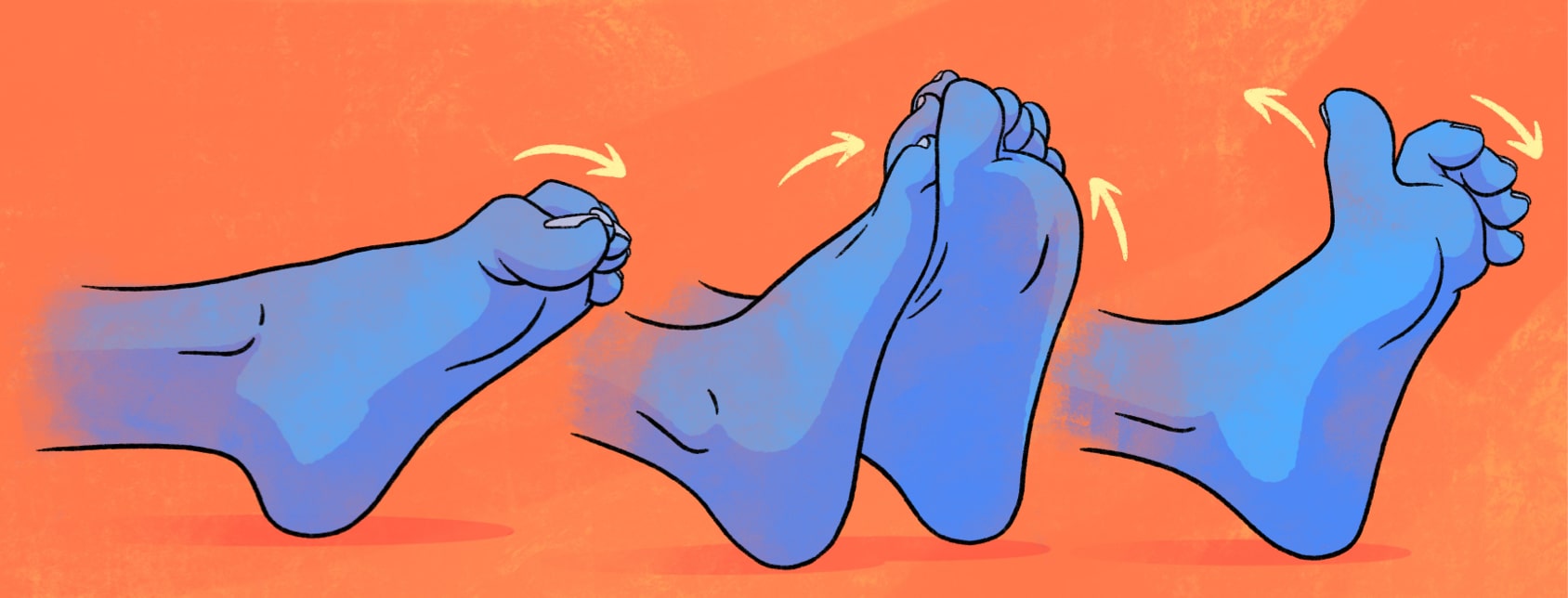PsA In The Feet: A New Trick for Plantar Fasciitis
Five years ago, I wrote an article on how to improve your plantar fasciitis. At the time, I thought I had tried everything: stretching, tape, orthotics, shockwave therapy (with plenty of tennis ball rolling and frozen water bottles). Eventually, the only thing I found to properly keep it under control was wearing a night brace/boot.
These boots keep your foot in a flexed position, which prevents the fascia from contracting at night (and makes the first few steps in the morning much less painful). This was the only thing that kept my plantar fasciitis (PF) at bay for a while. So, when I say I know stubborn PF, I do!
If your plantar fascia are stronger, they won't be so prone to injury.
But then, two years ago, I joined a group on Facebook for PF sufferers and found that many people were trying something different: plantar fascia strengthening. Not stretching (which fascia are bad at doing anyway), but strengthening.
This or That
Do you live with any other chronic health conditions in addition to PsA?
Each of these five exercises is isometric, which means static muscle contractions. You may have to build up the time you can hold each contraction and the number of repetitions you can manage. Start slow and go from there. I started doing these exercises every morning while lying in bed, which has kept the PF pain away for two years...
The point and flex
While laying flat, point your toes firmly down and hold, making sure to squeeze your quads (thighs) and calves. After 5 seconds, release. Next, flex your feet up and squeeze your leg muscles. After 5 seconds, release.
Because these are meant to strengthen (rather than stretch), it's important that you engage the muscles in your feet – this should feel like a workout! Repeat this point and flex the sequence 5 times.
The five-toe push down
Start by placing all the toes of your right foot across the top of your left foot, then push down with your right toes and push up with your left foot. Hold this push for 5 seconds, then switch sides. Repeat on each side 3-5 times. You should feel the muscles in the ankle and the pad of your right foot working.
The four-toe push down
The setup for this exercise is the same as above, except your right big toe goes under your left foot, so only the four toes of your right foot are on top of your left. Push down with those right four toes and push up with your left foot. Hold the push for 5 seconds, then switch sides. Repeat on each side 3-5 times.
(are those feet aching yet?!)
The toe spread
Now it's time to spread your toes! Point your big toes up while also trying to spread and push your other four toes down. Splay your toes as far as you can and hold for 5 seconds (you'll start feeling your feet working now).
Start a Forum
Next, point your big toes down while spreading and pushing your other four toes up (work yourself up to this exercise to prevent cramping in your arches). Repeat both exercises (big toes up and big toes down) 4 times.
The split toe curl
Last up, cross your second toe over top of your big toe. Curl your feet in to create a crescent moon shape and squeeze (trying to curve the arch in as much as possible). Hold for 5 seconds.
Then, switch directions – place your big toe on top of your second toe, curve your feet, and squeeze again. Hold for 5 seconds. Repeat both exercises 4 times.
Starting off on the right foot!
All five exercises take me about 10 minutes to do in the morning before I get out of bed. Now I no longer need my night boots, and as long as I wear shoes with orthotics and good support (no flats and no flip flops!), my plantar fasciitis stays happy.
If you'd like to look up these exercises or to see them demonstrated, search "Frank Ng Plantar Fasciitis" on YouTube!

Join the conversation